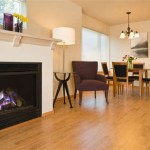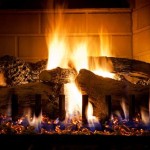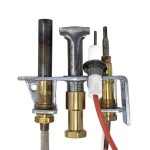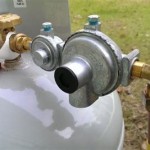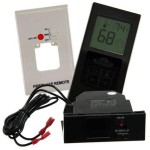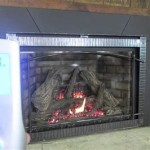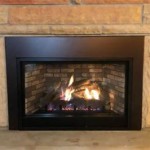```html
Hamilton Parker Fireplace Inserts: A Comprehensive Overview
Hamilton Parker stands as a prominent provider of building products, including a diverse range of fireplace inserts designed to enhance both the aesthetic appeal and heating efficiency of residential spaces. This article delves into the specifics of Hamilton Parker fireplace inserts, exploring their types, benefits, installation considerations, and maintenance requirements.
A fireplace insert is essentially a self-contained heating unit that is installed within an existing fireplace opening. It offers a more efficient and controllable heating solution compared to traditional open fireplaces, which often suffer from significant heat loss up the chimney. Hamilton Parker offers inserts powered by various fuel types, each presenting unique advantages and operational characteristics. The selection of the appropriate insert hinges on factors such as heating needs, fuel availability, and personal preferences.
Types of Hamilton Parker Fireplace Inserts
Hamilton Parker offers a variety of fireplace inserts, categorized primarily by their fuel source:
Gas Fireplace Inserts: These inserts utilize natural gas or propane as their fuel source. Gas inserts are prized for their convenience and ease of use. They typically feature push-button ignition and thermostatic control, allowing for precise temperature regulation. Gas inserts are often equipped with realistic-looking artificial logs, creating a visually appealing flame display. The installation of a gas insert requires a connection to a gas line, which may necessitate professional installation.
The benefits of gas fireplace inserts include consistent heat output, minimal maintenance, and the elimination of the need to store firewood. Venting options vary, with some models requiring a direct vent system that expels exhaust gases directly outdoors, while others utilize a chimney liner. Different models offer varying BTU (British Thermal Units) outputs, allowing homeowners to select an insert that aligns with the size of their living space. Higher BTU ratings are suitable for larger areas, while lower BTU ratings are appropriate for smaller rooms.
Wood Fireplace Inserts: Wood-burning inserts offer the classic ambiance and warmth associated with a traditional wood fire. These inserts are designed to burn wood more efficiently than an open fireplace, reducing emissions and maximizing heat output. Wood inserts typically feature a firebox enclosed by a cast iron or steel frame, along with a glass door that allows for viewing the flames. They require a chimney liner to ensure proper ventilation and prevent the buildup of creosote, a flammable substance that can lead to chimney fires.
Wood fireplace inserts provide a renewable heating source, provided that wood is harvested sustainably. They offer a robust heating solution capable of warming larger areas. However, wood inserts necessitate regular maintenance, including loading wood, removing ashes, and cleaning the chimney. The efficiency of a wood insert is often measured by its EPA (Environmental Protection Agency) certification, which indicates its compliance with emission standards.
Electric Fireplace Inserts: Electric fireplace inserts offer a convenient and versatile heating option that does not require venting or fuel lines. These inserts plug into a standard electrical outlet and use electric resistance heating to generate warmth. Electric inserts typically feature a realistic flame effect, created by LED lights and mirrored elements, providing a visual resemblance to a real fire.
Electric fireplace inserts are easy to install and operate, requiring minimal maintenance. They offer adjustable heat settings and can often be used with or without heat, allowing homeowners to enjoy the ambiance of the flames even during warmer months. Electric inserts are particularly suitable for apartments, condominiums, and other locations where gas or wood-burning options are not feasible. However, electric inserts generally provide less heat output compared to gas or wood inserts, and their energy consumption can be higher depending on usage.
Key Considerations When Choosing a Hamilton Parker Fireplace Insert
Selecting the appropriate fireplace insert requires careful consideration of several factors:
Fuel Type and Availability: The choice of fuel type should be based on factors such as the availability and cost of natural gas, propane, wood, or electricity. Natural gas and propane are generally convenient and clean-burning options, while wood offers a renewable heating source. Electricity provides a simple and versatile solution, but may be less cost-effective in areas with high electricity rates.
Heating Requirements: The size of the area to be heated is a crucial factor in determining the appropriate BTU output of the insert. A larger space will require a higher BTU rating to adequately warm the area. Homeowners should consult with a qualified professional to determine the optimal BTU output for their specific needs.
Venting Requirements: Gas and wood fireplace inserts require proper venting to safely exhaust combustion gases. Gas inserts may utilize direct vent systems or chimney liners, while wood inserts require a chimney liner. Electric inserts do not require venting. It is essential to ensure that the chosen venting system complies with local building codes and regulations.
Aesthetic Preferences: Fireplace inserts are available in a variety of styles, finishes, and designs. Homeowners should select an insert that complements the existing décor of their home and reflects their personal preferences. Options range from traditional designs with realistic log sets to more contemporary styles with modern flame displays.
Budget: The cost of a fireplace insert can vary significantly depending on the fuel type, features, and brand. Homeowners should establish a budget and compare prices from different retailers before making a purchase. The total cost should include the price of the insert itself, as well as installation costs and any necessary venting or fuel line modifications.
Installation and Maintenance of Hamilton Parker Fireplace Inserts
Proper installation and maintenance are crucial for ensuring the safe and efficient operation of a fireplace insert:
Professional Installation: Gas and wood fireplace inserts should be installed by qualified professionals who are experienced in working with gas lines, venting systems, and building codes. Improper installation can pose a significant safety hazard and may void the warranty. Electric inserts can typically be installed by homeowners, but it is essential to follow the manufacturer's instructions carefully.
Chimney Inspection and Cleaning: Before installing a wood or gas insert that utilizes the existing chimney, it is essential to have the chimney inspected and cleaned by a qualified chimney sweep. This will ensure that the chimney is in good condition and free from any obstructions that could impede ventilation. Regular chimney cleaning is also necessary to prevent the buildup of creosote, which can lead to chimney fires.
Regular Maintenance: All types of fireplace inserts require regular maintenance to ensure optimal performance. Gas inserts should be inspected annually by a qualified technician to check for gas leaks, carbon monoxide emissions, and proper functioning of the controls. Wood inserts require regular cleaning of the firebox and chimney, as well as inspection of the door seals and gaskets. Electric inserts require minimal maintenance, but it is essential to keep the air vents clean and to replace the LED lights as needed.
Safety Precautions: It is essential to follow all safety precautions outlined in the manufacturer's instructions when operating a fireplace insert. This includes keeping flammable materials away from the insert, using a fire screen to prevent sparks from escaping, and ensuring that the room is adequately ventilated. Carbon monoxide detectors should be installed in the home to provide early warning of any potential carbon monoxide leaks.
Hamilton Parker fireplace inserts offer a range of options for homeowners seeking to enhance the comfort, efficiency, and aesthetic appeal of their living spaces. By carefully considering the various factors outlined in this article, homeowners can select an insert that meets their specific needs and preferences, ensuring years of reliable and enjoyable operation.
```
Fireplaces Frequently Asked Questions Hamilton Parkerhamilton Parker

Fireplaces Archives Hamilton Parker

Visualize Your Designs Hamilton Parkerhamilton Parker

Fireplaces Construction Building Components

Ortal Fireplaces On Linkedin Centering A Fireplace In Room Doesn T Have To Be Hard Rule Some Times

Inset Stove With Stone Surround

Heating 60 Inch Electric Inset Fireplace Living And Home

Fireplaces At Eddins Furniture

Vent Free Fireplaces Popular Despite Safety Worry

1809096 Barrow Creek 53 Fireplace Tv Stand Espresso D Afw Com
Related Posts

